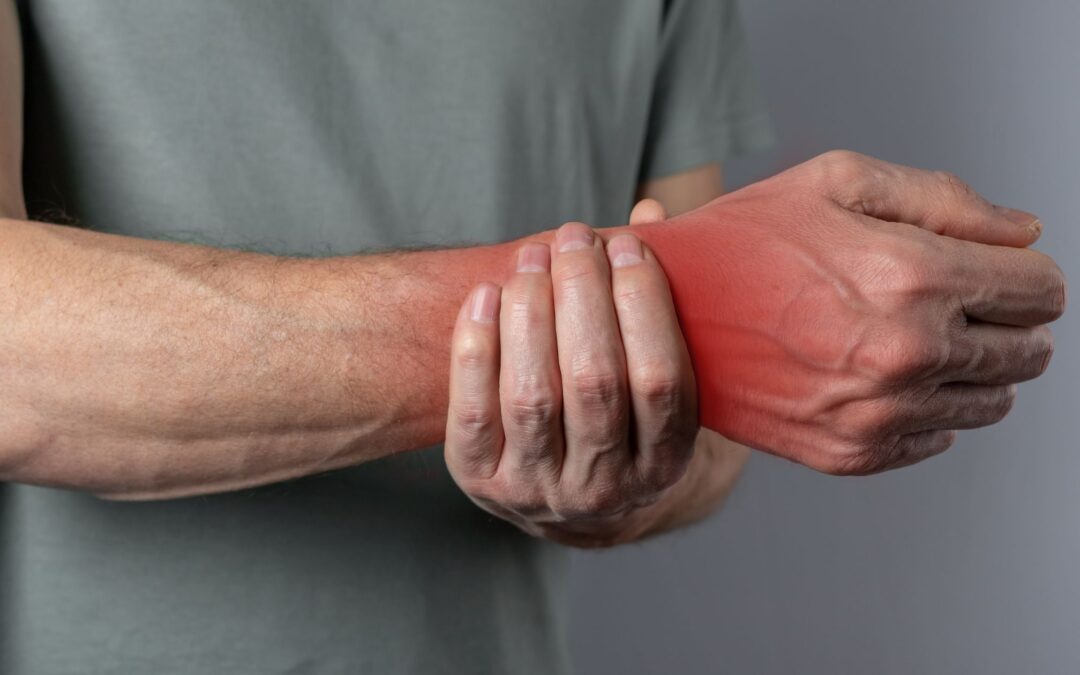We use our hands for just about everything. So it should come as no surprise that hand and wrist injuries are common, and come in many forms. As St George hand and wrist surgery experts, we see a wide range of injuries. They range from minor sprains to serious fractures, as well as chronic pain and joint disease. When you’re suffering from a painful hand and wrist injury, it can be difficult to get through your day. It can make it painful to hold your children, to work, to type on your computer, and even to enjoy your favorite hobbies.
Finding the right treatment and seeking help for a hand or wrist injury as quickly as possible can help you get back to pain-free fast. Keep reading as we take a look at some common hand and wrist injuries, and how the experts at St George Hand Surgery can help.
1. Sprains
A sprain occurs when an injury forces your ligaments to overstretch or tear. Sprains are by far the most common sports injuries. But they are common in everyday life as well. Rolling your ankle while walking on an uneven surface can cause an ankle sprain. Turning too quickly in a different direction can cause one in your knee. Catching a fall with your arms extended in front of you can lead to a wrist sprain. Even your fingers can suffer a sprain if you overextend or land on them during a fall.
How painful or serious a sprain is will vary depending on the injury and the individual. Most minor sprains will heal on their own with time and a little TLC. Icing the injured area, taking over-the-counter medications for the pain and to reduce swelling, and doing some simple rehabilitation exercises can help a minor sprain heal in just weeks or a few months.
However, severe sprains in the fingers or wrist or those that won’t heal may need to be looked at by a St George hand and wrist surgery expert. If you’ve suffered a sprain, and the pain and swelling doesn’t begin to go down within a couple of days, it’s a good idea to schedule an appointment to have a doctor take a look. They may recommend an MRI to see if a more serious injury could be accompanying the sprain or to see if the sprain needs more serious treatment in order to heal.
2. Fractures
Hand and wrist fractures are almost as common as sprains. They may be caused by the same types of accidents. Fractures of the wrist are often a result of a hard fall, in which the individual attempts to catch themselves with their arms outstretched. Hand and wrist fractures are very common sports injuries as well. This is especially true for sports where falls are common, like skateboarding or snowboarding. Scaphoid fractures, or fractures of the small bones in the wrist, are also common injuries in individuals over the age of 40.
Much like sprains, some fractures can be treated without surgery. Fractures are usually diagnosed with an x-ray. A splint may then be used to immobilize the wrist to allow it to heal. Medication and icing can help with pain and to bring down the swelling associated with this type of injury. However, a serious scaphoid fracture may require surgery to repair the bone and allow it to heal properly. Physical therapy may also be necessary, either in conjunction with surgery or not, for the individual to regain full use and range of motion in their wrist after a fracture.
3. Trigger Finger
Trigger finger is another common type of hand injury. Despite the name, trigger finger isn’t solely associated with repeated target practice. Instead, trigger finger can be caused by many types of repetitive gripping motions. It’s more common in women, and individuals with diabetes may be at greater risk of developing trigger finger.
Because trigger finger is usually caused by repetitive motions, it’s more accurate to label it a condition than an injury. It can affect any finger, including your thumbs. Depending on the motion that led to the condition, trigger finger can even affect several fingers at once. Trigger finger can lead to finger stiffness, especially first thing in the morning, a popping sound when the finger is bent and unbent, a bump and tenderness at the base of the finger, and a catching feeling as you bend the finger. In serious cases, it can even cause your finger to become locked in a bent position, preventing you from straightening it.
Your St George hand and wrist surgery experts can help diagnose trigger finger. We’ll also help you choose the best course of treatment. More minor cases of trigger finger may be treated by splinting the affected fingers. In other cases, steroid injections or surgery may be necessary.
4. Carpal Tunnel Syndrome
Another injury caused by repetitive motions is carpal tunnel syndrome. Where trigger finger impacts your fingers, carpal tunnel affects the wrist. It is caused by an injury to your nerves as they travel through your wrist. Carpal tunnel syndrome can cause pain, tingling, and numbness in your hands or even up your arms. While more common in older individuals, carpal tunnel syndrome can happen to anyone.
Treatment for carpal tunnel syndrome may include wrist splints. These allow the nerve to heal while reducing range of motion. In some cases, individuals may even be able to reduce pain on their own by wearing a padded wrist brace while sleeping to keep the wrist from bending and pinching the nerve.
However, serious cases or those that won’t heal with splints alone may require corticosteroid injections. If injections aren’t enough, or if the individual begins experiencing muscle weakness in their hands or loss of motion, surgery may be necessary.
St George Hand and Wrist Surgery Can Help
Whether you’re suffering from chronic pain that interrupts your day-to-day life or an injury has forced you to put your life on hold, St George hand and wrist surgery can help. As experts in common and uncommon hand and wrist injuries, we are dedicated to providing the highest quality care with compassion and kindness.
Contact us today to schedule an appointment and to learn more about your treatment options.

